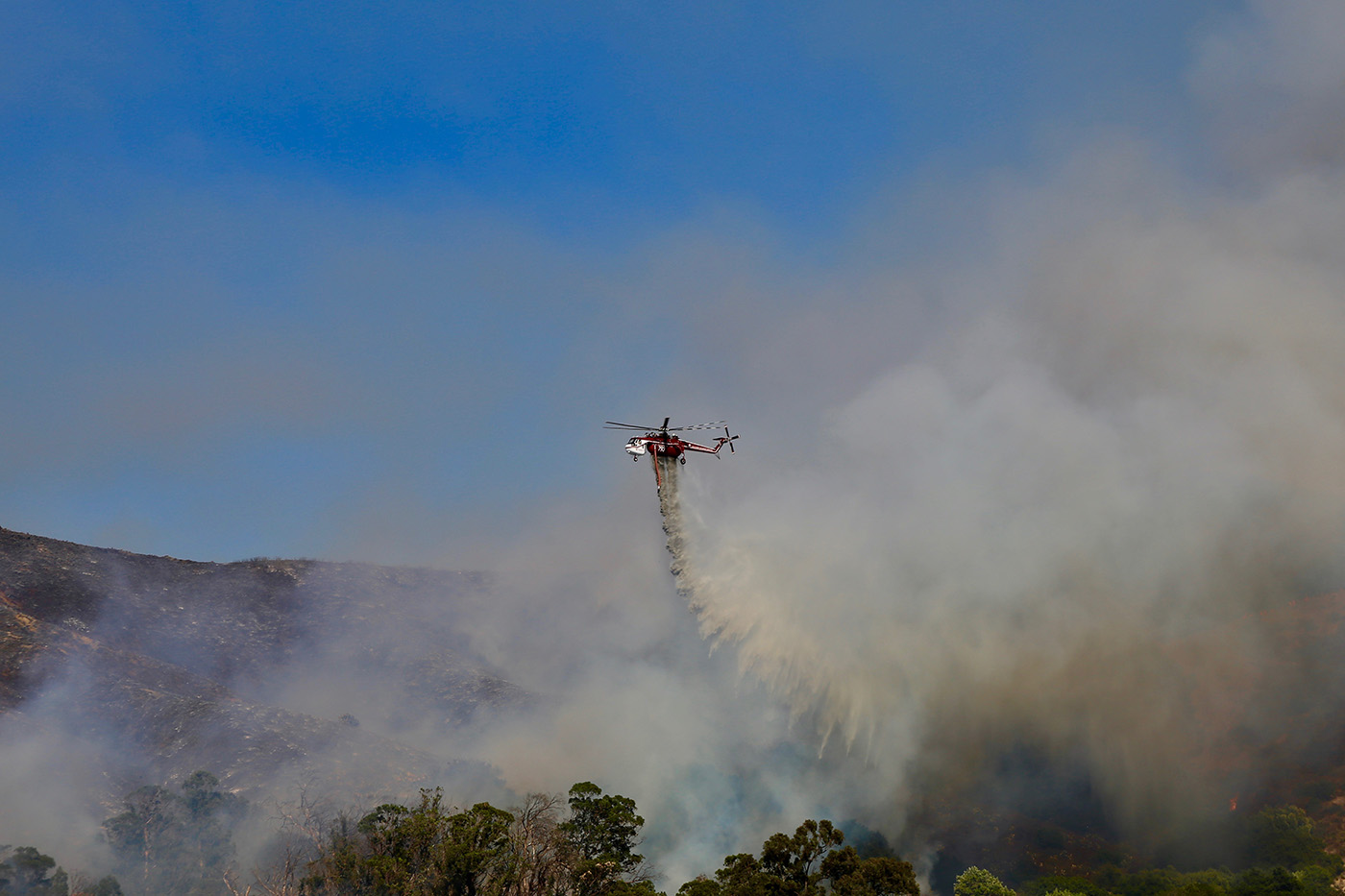Fire season has begun, and there’s a few things Cal Poly students should know to be prepared.
Fire season is intensifying and getting longer, according to professor and geologist William Preston. The amount of land burned in California during a wildfire has also increased by 500 percent since 1972.
“When [a fire] does light, it burns hotter, it burns very fast and often expands into one of these huge conflagrations that we’re becoming used to,” Preston said.
Climate change appears to affect the length and intensity of fire season, Preston said. Over the last 100 years, California’s average temperature increased by 2.5 degrees Fahrenheit, according to Preston.
In 1972, Cal Fire needed about four days to control a fire. Now they need about 14 days, Preston said.
Additionally, California’s dry season lasts even longer. In the 1970s, California’s rainy season started in October. Now, it starts in November or December, giving soil and plants more time to dry out and making them more vulnerable to fire.
“We’re still really concerned about the wind,” Gutierrez said. “We ask that you be very fire safe if you’re out and about out in the wilderness.”
Get Prepared
To prepare for an emergency, the San Luis Obispo Fire Department recommends making or purchasing a Go Bag, a 72-hour emergency kit.
The bag should include enough food, water, medicine, blankets and clothing for 72 hours, a flashlight and important documents like a birth certificate, a Social Security card and an insurance card, Gutierrez said. Students should also pack a gallon of water a day per person.
Gutierrez said students are recommended to have a personal evacuation plan. He said students should make a plan to stay with friends and family in other geographic areas during an emergency.
He added that students should also know the location of manual pull station fire alarms, fire extinguishers and at least two exits out of their building, Gutierrez said.
“It’s better to be prepared,” Cal Poly Emergency Management Director Anthony Knight said. “During that emergency, when you’re faced with a fight, flight or freeze mode, you’re going to be able to react versus freeze and not know what to do, and it’s for your own safety.”
Knight recommended that students download evacuation route maps onto their phones to access during an emergency. Evacuation maps can be found at the Department of Emergency Management website.
Additionally, Knight said students should sign up to receive text messages from PolyAlert, a system that uses the Cal Poly database to send emails and texts about emergencies to students, faculty and staff, so they can receive emergency updates quickly and accurately.
Why Cal Poly would need to evacuate
When a situation on or near campus threatens life safety, Cal Poly enforces an evacuation, Knight said.
If an emergency threatens only a section of campus, then only buildings in that area will be evacuated. For example, Cal Poly evacuated Fremont Hall in 2017 because rain and loose soil threatened the building with a mudslide, according to Knight.
If an emergency threatens the safety of the entire campus, then all buildings on campus will be evacuated. For example, if a wildfire was approaching Cal Poly, the whole campus would need to be evacuated, Gutierrez said.
How the evacuation works
In the event of a fire emergency, students will be notified of the evacuation by fire alarms, then the University Police Department (UPD) and firefighters will immediately direct students where to go, according to Knight.
If Cal Poly anticipates that a fire will endanger campus in a few days, they will issue an evacuation order through PolyAlert.
“During an actual emergency, if we’re talking about a large scale disaster, it’s incumbent upon you to get out when we ask you to,” Gutierrez said. “The last thing we want to worry about is students inside dorms. That puts us in jeopardy and it’s just a different ballgame when we have to worry about lives.”
Throughout the course of the evacuation, students would receive updates through PolyAlert and the Department of Energy Management (DEM) Twitter and Facebook pages. The University Police Department (UPD) would also deliver information through the radio at AM 1610, according to the Cal Poly Emergency Operations Plan.
Additionally, local, state or federal officials can activate the Integrated Public Alert System, which sends alerts to phones in a certain area even if they are not registered with the PolyAlert system, according to the Emergency Operations Plan.
If students have questions during an evacuation, they can contact university officials through a hotline, an interactive website or through an email address that will be announced during the emergency, according to Cal Poly’s Evacuation Annex Plan.
Where to go when you leave your building
In the event of an evacuation, UPD, firefighters or Building Emergency Response Coordinators would guide students to one of Cal Poly’s three evacuation areas – Highland Drive, Grand Avenue and California Boulevard. Each evacuation area has a specific evacuation route to prevent traffic, but Cal Poly can also open up Mt. Bishop Road to alleviate traffic, according to the Evacuation Annex Plan.
For a small scale emergency that affects only a few buildings, evacuated residents would be relocated to other residence halls on campus.
During a campus-wide evacuation, residents would be relocated to hotels partnered with Cal Poly. If hotels fill up, Cal Poly would coordinate with the Red Cross to set up shelters for residents in San Luis Obispo, according to the Evacuation Annex Plan.
Cal Poly has also partnered with bus and shuttle companies to provide carless students with transportation during an evacuation. Carless pickup points would be located near evacuation zones.

